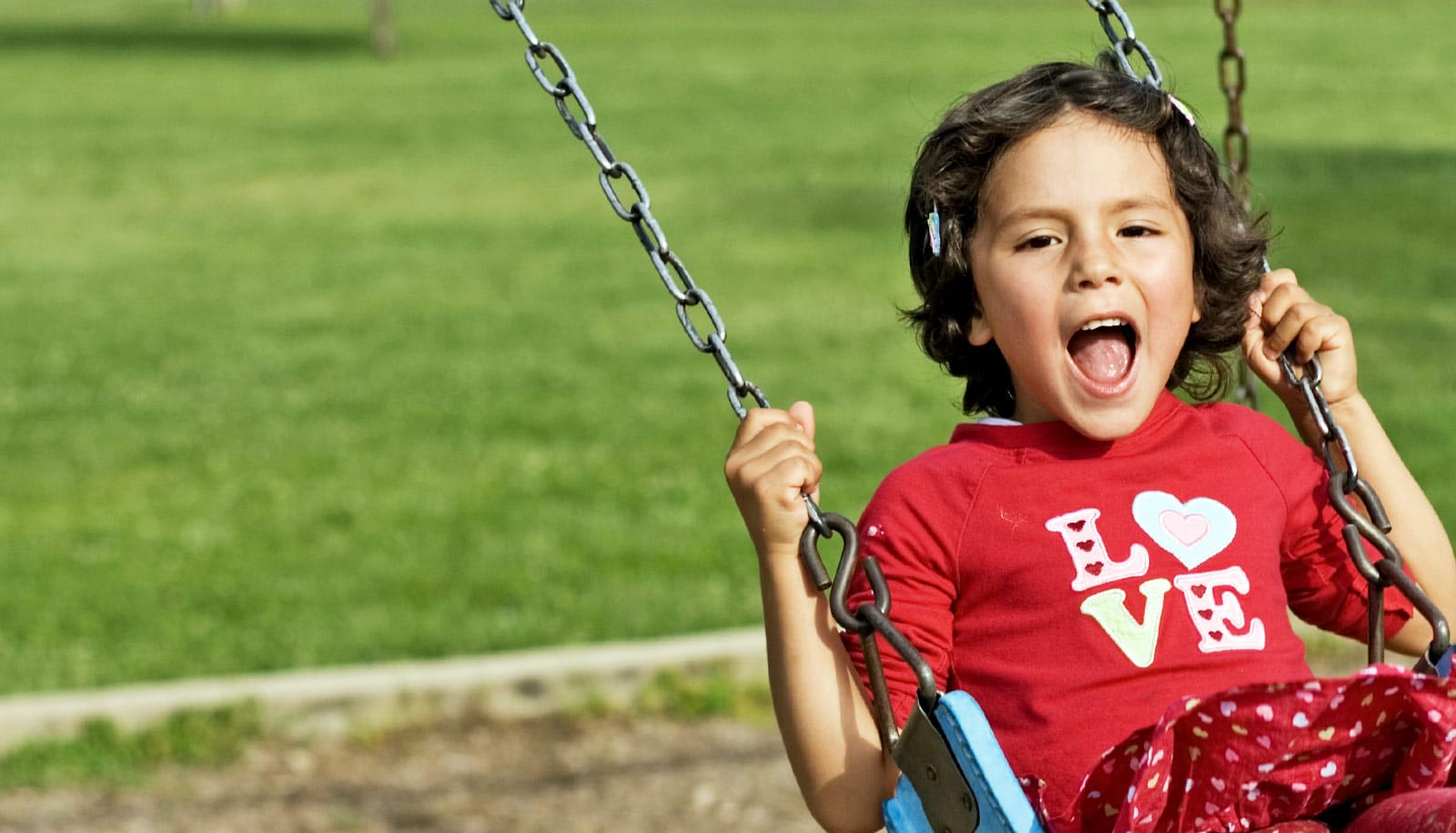Playing on the swings is more than fun. The measured, synchronous movement can encourage preschoolers to cooperate on other activities, a new study shows.
“Synchrony enhances cooperation, because your attention is directed at engaging with another person, at the same time,” says Tal-Chen Rabinowitch, a postdoctoral researcher at the Institute for Learning & Brain Sciences (I-LABS) at the University of Washington. “We think that being ‘in time’ together enhances social interaction in positive ways.”
Previous studies have linked music and being in sync with other prosocial behaviors, such as helping, sharing, and empathizing, among young children: Marching together to a song, for example, might prompt one child to share with another.
In the new study, published in Journal of Experimental Child Psychology, researchers focused on movement alone, without music, and examined how children cooperated with one another afterward.
Cooperation—adapting to a situation, compromising with someone else, working toward a common goal—is considered a life skill, one that parents and teachers try to develop in a child’s early years.
Dogs and toddlers outdo chimps at social skills
For the study, researchers built a swing set that allowed two children to swing in unison, in controlled cycles of time. Pairs of four-year-olds—who didn’t know each other—were randomly assigned to groups that either swung together in precise time, swung out of sync with each other, or didn’t swing at all. The pairs in all three groups then participated in a series of tasks designed to evaluate their cooperation.
In one activity, the children played a computer game that required them to push buttons at the same time in order to see a cartoon figure appear. Another, called the “give and take” activity, involved passing objects back and forth through a puzzle-like device.
Children who swung in unison completed the tasks faster, indicating better cooperation than those who swung out of sync, or not at all. On the button-push task, for instance, the pairs who had been swinging together showed a greater tendency to strategically raise their hands before they pushed the button so as to signal their intent to the other child, which proved to be a successful tactic for the task.
Expel preschoolers or teach them social skills?
For four-year-olds, moving in sync can create a feeling of “being like” another child that, consequently, may encourage them to communicate more and try to work together, Rabinowitch says.
“Cooperation has both a social and cognitive side, because people can solve problems they couldn’t solve alone,” says I-LABS co-director and psychology professor Andrew Meltzoff. “We didn’t know before we started the study that cooperation between four-year-olds could be enhanced through the simple experience of moving together. It’s provocative that kids’ cooperation can be profoundly changed by their experiences.”
The findings can have implications outside the lab, Rabinowitch says. Teachers and parents can provide “in sync” opportunities for groups of children, whether through music, dance, or play.
A Fulbright Postdoctoral Fellowship, along with grants from the Grammy Foundation, the Bezos Family Foundation, and the Robert L Richmond Foundation funded the work.
Source: University of Washington



